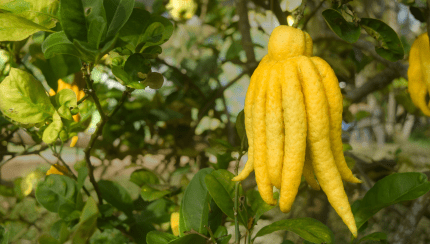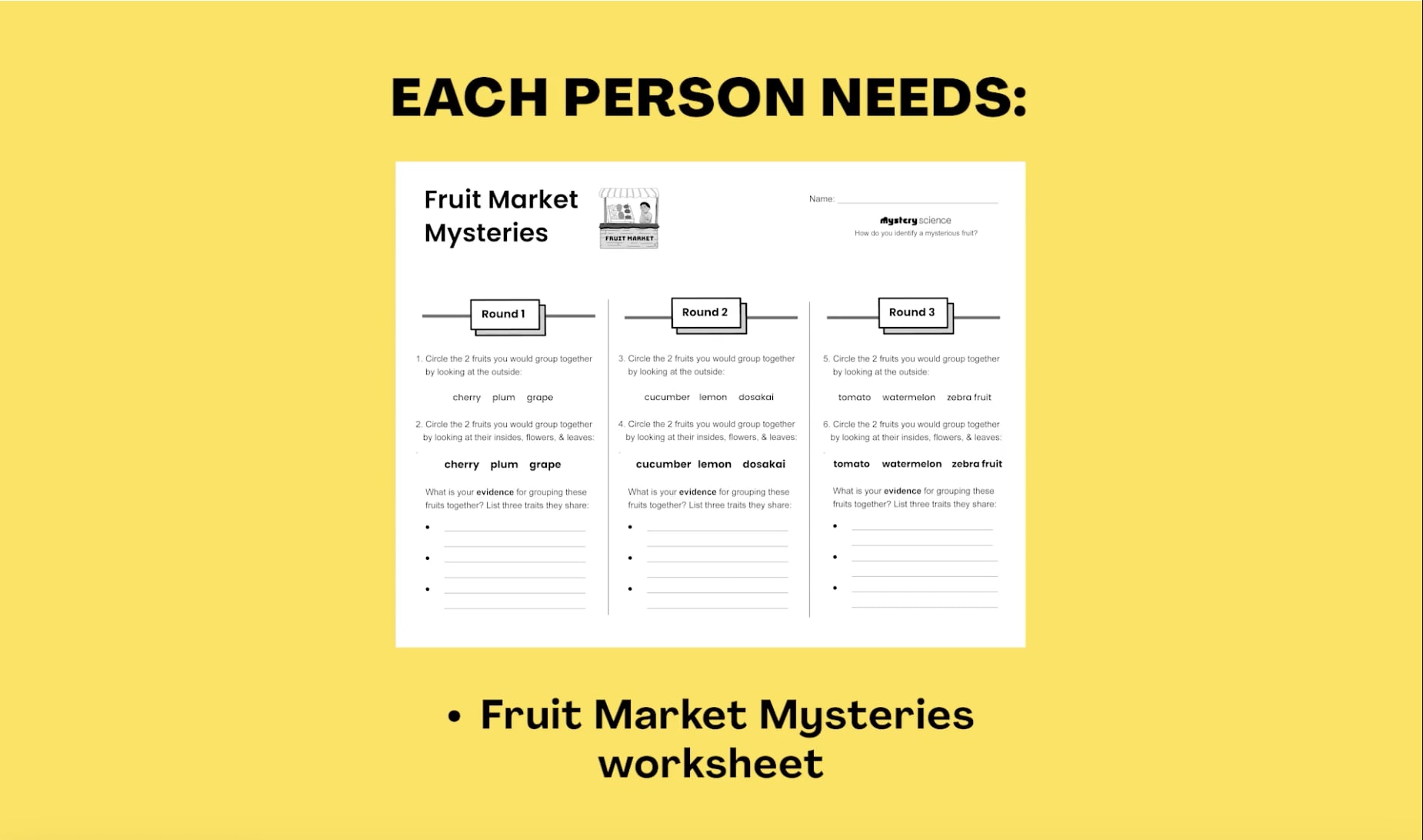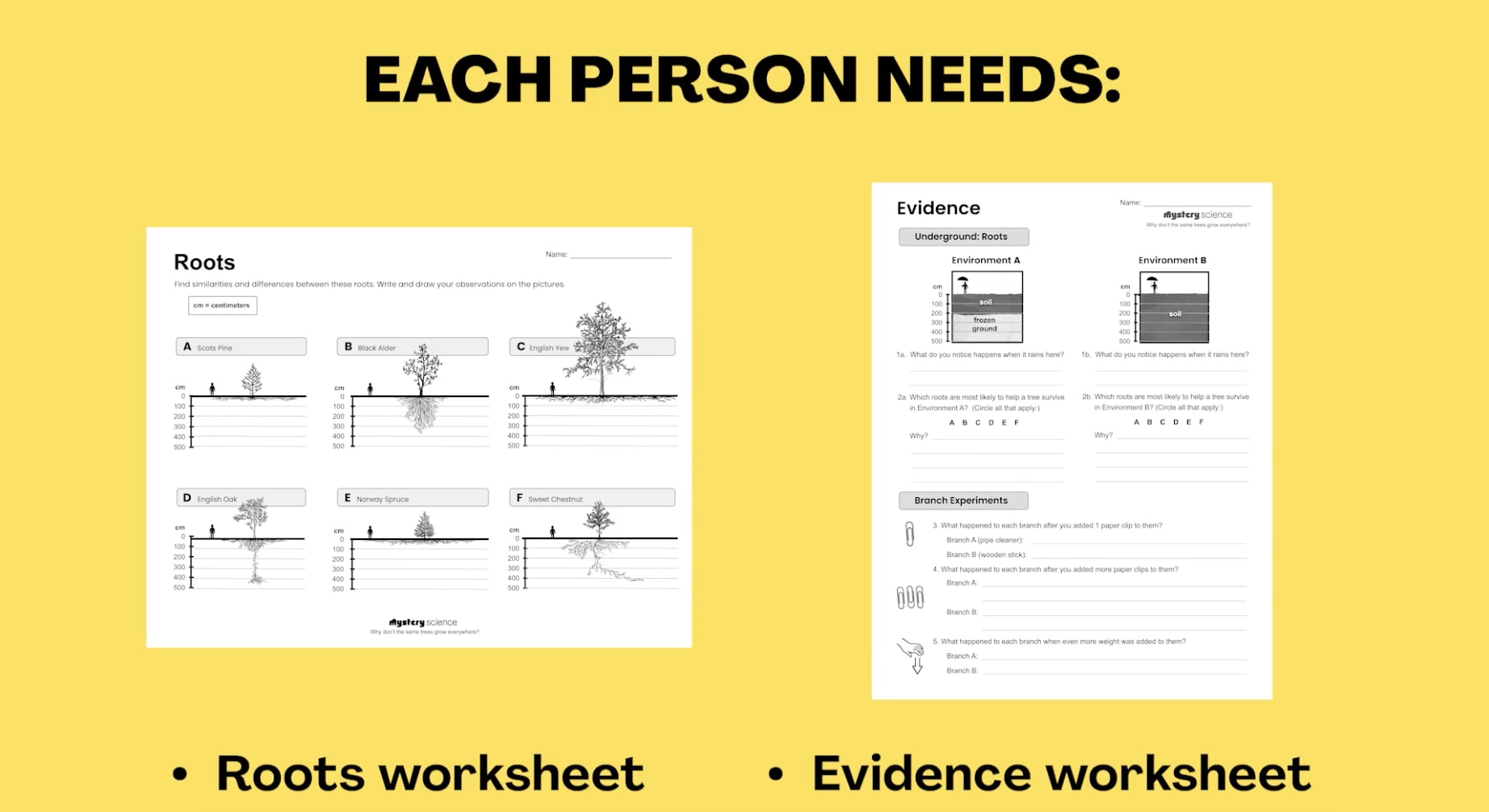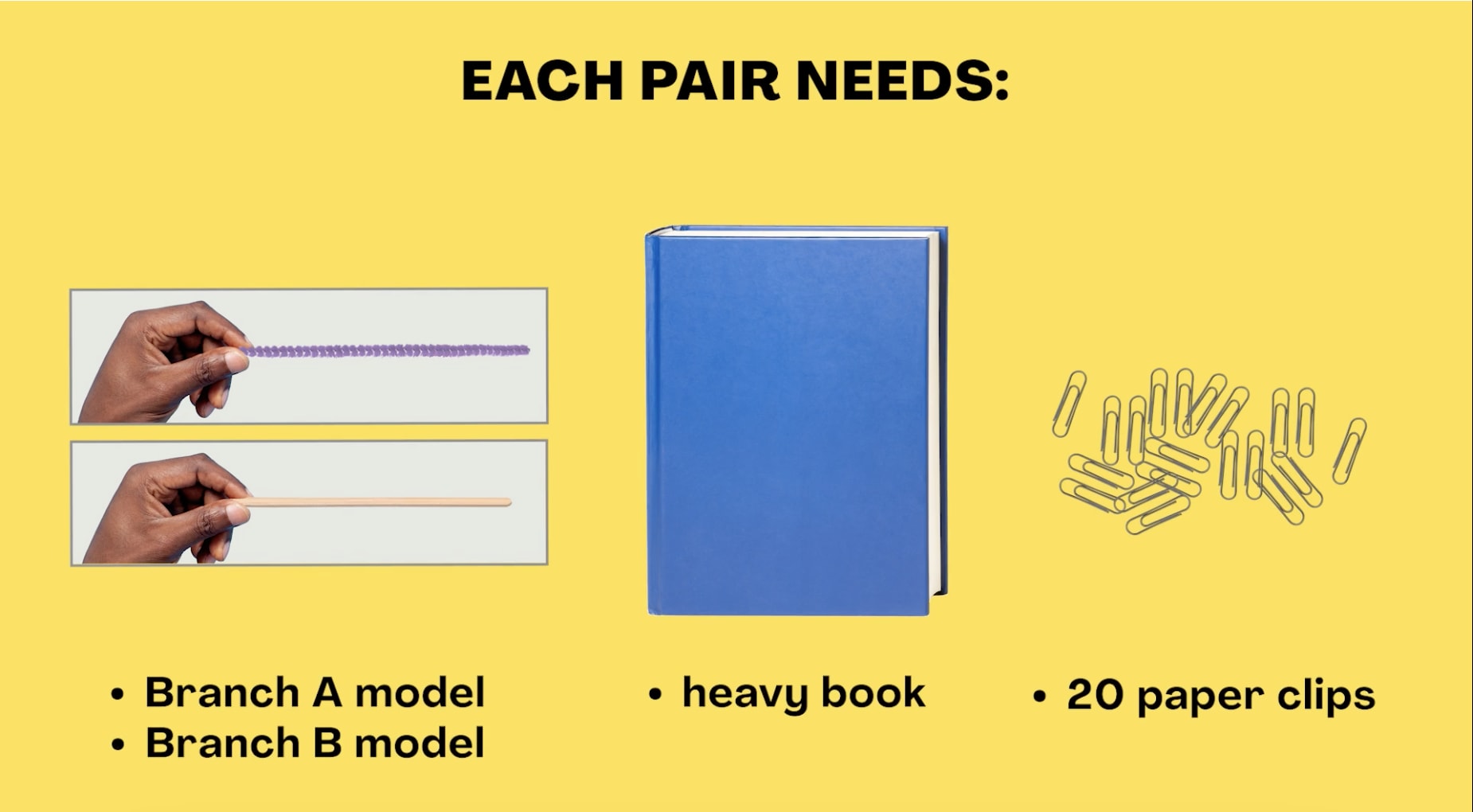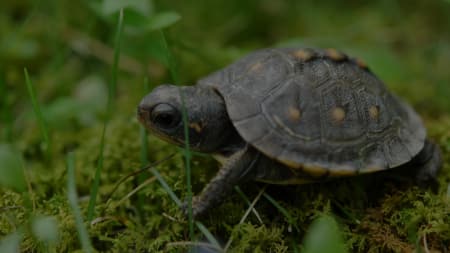We suggest students work in pairs. Homeschool students can work on their own.
This lesson presents a series of virtual activities so that students can gather evidence and make a claim about what plants use for their growth: soil, water, or air.
Each student needs a Plant Matter Mystery worksheet for the duration of the lesson.
Plan Your Time
If you have limited time, you can divide this lesson into two sessions. We have marked a natural stopping point after students gather evidence about soil and water.
Part 1: Soil & Water Experiments.
Part 2: Air Experiments & Making a Claim begins here.
Students will need the Weighing Air worksheet in Part 2.
Teacher Background
In this lesson, we focus on weight as evidence for an increase in plant matter though technically this is mass. We follow the recommendation of science standards and do not distinguish between mass and weight at this grade level.



